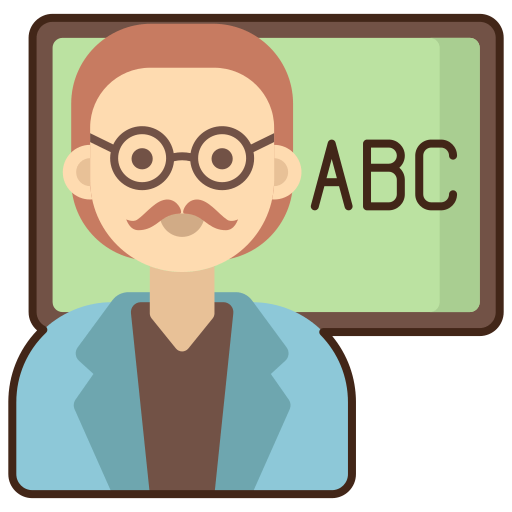Q&A: Retiring Maryville University President Recalls Early Connectivity Efforts

As students gravitated to smartphones over flip phones, and increasingly relied on laptops and other connected technologies both inside and outside of the classroom, Lombardi brought together the university’s leadership team to ask a pivotal question: What does it mean to be student-centered?
Our culture truly moves at great rate now. We have actually had professors collaborate to develop and arrange a brand-new major, and get it up and running in a matter of weeks, not years. We’ve really instilled the culture with a sense of urgency because that’s the means the world functions. The world isn’t stopping for anyone, absolutely except universities and except any type of business.
It came to be a peer-to-peer learning exchange. One of the means we facilitated that was to place iPad devices in the hands of every professors member and trainee, packed with discovering apps. Now we’ve got close to 300 complimentary learning applications that trainees or professors participants can download easily.
Tara worked as a newspaper reporter and editor for greater than 13 years and acted as executive editor of the complete collection of CDW Tech publications up until 2019. She takes pleasure in finding out about new technology and traveling with her household.
Our trainees tell us all the time just what a distinction the digital experience below is compared with other schools they go to or check out. We had regarding 1,400 traditional trainees after that, and the rest were what we utilized to call “weekend break and evening,” not online. Now we have even more than 9,000 students: more than 3,000 on our standard, residential school and more than 6,000 in the on the internet room– graduate and undergraduate.
LOMBARDI: It’s still going 12 years later on. Colleges don’t invest sufficient in professors growth. We decided that if professors growth and finding out these innovations is so vital, we require to purchase it. We generally upped their income and said one week in May after graduation and one week in August prior to positioning will certainly be faculty development weeks. Nothing else taking place, just professors– and we’re not going to run it, you’re going to run it. We encouraged those peers who were already doing it to lead it, and we generally have 90% to 95% involvement. They share concepts and use the brand-new modern technologies. They’re finding out about AI now; we made it component of the society, and currently it’s sort of like the air they take a breath. It initially cost us concerning $462,000 for the dimension of our professors back then. Our faculty numbers have actually grown since then, so now it’s most likely near to a $1 million financial investment every year.
When I got here in 2007, we did a student contentment study. The pupils whined about three things in those days: food, modern technology and auto parking. Our early work permitted us to move heavily into data science and cybersecurity offerings, an overhauled computer scientific research program, and now a fabricated knowledge program.
LOMBARDI: Many universities actually worship at the altar of seniority. The power among the faculty is with elderly or tenured professors. What we understood, though, at the time, was that if we mobilized every one of the more youthful faculty who were already in that room, utilizing iPad tools and other innovation, they would certainly lead the charge.
The team’s reaction caused one of one of the most comprehensive connectivity- and technology-focused initiatives in college at the time. The substantial brand-new network improved and brought in students retention, and laid a solid foundation for brand-new student-centered applications and rethinking strategies to technology-enhanced understanding. Lombardi spoke recently with EdTech concerning those early choices, as well as where college ought to focus beside remain pertinent despite quickly moving modern technology and pupil engagement.
LOMBARDI: We started in 2008 and we were done right around 2010, which was interesting because that was a watershed year in the digital transformation room. The mobile phone and the Apple iPad were presented, and that dimension of mobile modern technology actually took a quantum leap. Potential students would certainly come on campus, open their cellular phones, and they can connect.
We have actually layered in much more innovative data analytics and analysis over the years; that process will certainly go on up until the end of time. Currently we’re utilizing all kinds of AI-driven bots and other devices to gather data and evaluate it in genuine time. In lots of ways, it’s an entire brand-new method of paying attention to our trainees, to what they’re telling us, even though they might not be conscious that they’re informing us.
LOMBARDI: We made some errors along the method, because those of us doing it were educated in the 20th century. Trainees placed beds and chests of drawers and points against them, and as we did testing on connectivity, the testing looked excellent, however the trainees were whining. We went in and looked about, and stated, “Well, of course!
Lombardi spoke recently with EdTech about those very early choices, as well as where higher education must concentrate following to continue to be relevant in the face of swiftly shifting innovation and trainee engagement.
When Mark Lombardi took over as president of Missouri’s Maryville University in 2007, an interactions and digital makeover was knocking at the field’s door. As trainees gravitated to smart devices over flip phones, and increasingly counted on laptop computers and various other connected innovations both inside and outside of the classroom, Lombardi united the university’s management group to ask an essential question: What does it suggest to be student-centered?
Anytime I’m talking around the nation, I tell other head of states, primary scholastic police officers and deans, “There are people out there currently doing this on your campuses. Find them. Elevate them up and equip them.”
Where are we in terms of technology? We decided that we needed to be where the pupils are in their lives, or else we would certainly be chasing them permanently. The majority of colleges incrementally enhance modern technology and make repair work.
We took data out of the academic side, pupil life, sports, and placed it directly under the head of state’s workplace, for several factors. We were swimming in a sea of information around our trainees and understanding, and we weren’t utilizing it appropriately. Professors get a home window into specific data about pupils, pupil life gets a window, and all of our pupils obtain to see their information and their profiles.
We took information out of the academic side, student life, sports, and put it squarely under the head of state’s workplace, for numerous reasons. We were swimming in an ocean of information around our students and understanding, and we weren’t utilizing it properly. Faculty get a home window right into certain information about trainees, pupil life obtains a home window, and all of our trainees get to see their data and their accounts. Trainees placed beds and chests of cabinets and points against them, and as we did screening on connection, the testing looked wonderful, however the trainees were complaining.
1 CDW Tech2 CDW Tech magazines
3 suite of CDW
4 Tech magazines
« Unpacking the Role of AI in Physical SecurityDebunking 3 Myths About Cloud-Based Phone Systems »
